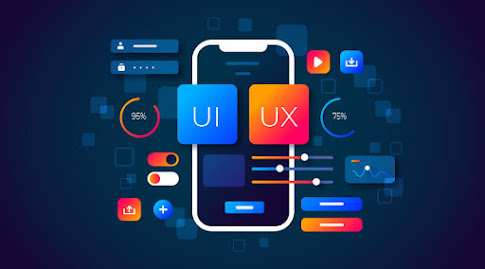Breaking Boundaries: Exploring the Future of UI UX Design Services
Introduction
In today's digital age, user interface (UI) and user experience (UX) design play a pivotal role in shaping the success of any online platform. With rapid advancements in technology and evolving user expectations, the future of UI UX design services holds immense potential and promises exciting possibilities. This article delves into the emerging trends, challenges, and innovations that will shape the future of UI UX design.
1.The Importance of UI UX Design
UI UX design is the art of crafting user-friendly interfaces that enhance the overall experience of interacting with digital products and services. It focuses on creating intuitive, visually appealing, and seamless user experiences that meet the needs and expectations of the target audience. A well-designed UI UX can significantly impact customer satisfaction, engagement, and conversion rates.
2.The Evolution of UI UX Design
Over the years, UI UX design has evolved from purely functional to strategic in digital product development. Initially, UI design primarily focused on aesthetics, while UX design aimed at improving usability. However, the lines between UI and UX have blurred, leading to a more holistic approach that considers visual and experiential aspects.
3.Future Trends in UI UX Design Services
3.1 Augmented Reality (AR) and Virtual Reality (VR)
AR and VR technologies are revolutionizing the way users interact with digital interfaces. These immersive technologies offer unique opportunities for UI UX designers to create captivating and interactive experiences. From virtual product try-ons to virtual tours, AR and VR have the potential to reshape industries such as e-commerce, real estate, and entertainment.
3.2 Voice User Interface (VUI) Design
With the rise of smart speakers and virtual assistants, voice interaction has become increasingly prevalent. VUI design focuses on creating seamless voice-controlled interfaces that enhance user convenience. As voice technology advances, UI UX designers must consider spoken language's nuances and design intuitive voice interactions.
3.3 Motion Design and Micro interactions
Motion design involves adding animated elements to UI, bringing interfaces to life, and making interactions more engaging. Microinteractions, on the other hand, are small, subtle animations that provide feedback and guide users through the interface. These trends are set to become more prevalent as UI UX designers seek to create visually dynamic and emotionally resonant experiences.
3.4 Responsive and Adaptive Design
Responsive and adaptive design becomes crucial as users access digital platforms across various devices and screen sizes. UI UX designers must ensure that interfaces adapt seamlessly to different devices, providing consistent and optimized experiences. The responsive and adaptive design will continue to gain significance in the future of UI UX design services.
4.Challenges in the Future of UI UX Design
While the future of UI UX design is promising, it also presents challenges. Some of the key challenges include:
Complexity: As technology advances, interfaces become more complex, requiring designers to navigate intricate systems and interactions.
Cross-platform Consistency: Ensuring consistent experiences across multiple platforms and devices can be challenging, given the diverse screen sizes, resolutions, and operating systems.
Accessibility: Designing for inclusivity and accessibility poses challenges as UI UX designers need to consider users with different abilities, ensuring that interfaces are usable by all.
Data Privacy and Security: With increasing concerns about data privacy, UI UX designers must find innovative ways to balance personalized experiences with user privacy and security.
Embracing New Technologies: Keeping up with emerging technologies such as AI, AR, and VR requires continuous learning and adaptation to stay ahead in the rapidly evolving landscape.
5.Innovations in UI UX Design Tools and Technologies
To meet future demands, UI UX designers can leverage innovative tools and technologies. Some notable advancements include:
Design Systems: Design systems provide a centralized repository of reusable components and guidelines, enabling designers to maintain consistency and streamline collaboration.
Prototyping and Testing Tools: Advanced prototyping and testing tools allow designers to quickly iterate and validate design concepts, reducing development time and costs.
Data-Driven Design: Utilizing data analytics and user research, designers can make informed decisions based on user behavior and preferences, leading to more effective design solutions.
Collaborative Platforms: Cloud-based collaboration platforms facilitate seamless teamwork and communication among designers, developers, and stakeholders, enhancing the design process.
6.The Role of AI in UI UX Design Services
Artificial Intelligence (AI) has the potential to revolutionize UI UX design services. AI-powered tools can automate repetitive tasks, generate design recommendations, and analyze user data to optimize experiences. However, human creativity and intuition will remain essential in crafting meaningful and emotionally resonant designs.
7.The Future of UI UX Design Careers
The future looks promising for UI UX design professionals. As businesses recognize the value of exceptional user experiences, the demand for skilled UI UX designers will continue to grow. Roles such as UX researchers, interaction designers, and UX strategists will be in high demand, offering exciting opportunities for those passionate about creating innovative digital experiences.
Conclusion
In conclusion, the future of UI UX design services has tremendous possibilities. Emerging technologies, evolving user expectations, and innovative design approaches will shape how we interact with digital interfaces. UI UX designers must stay adaptable, embrace new tools and technologies, and prioritize user-centered design to create seamless, engaging, and delightful user experiences across various platforms and devices.



Comments
Post a Comment